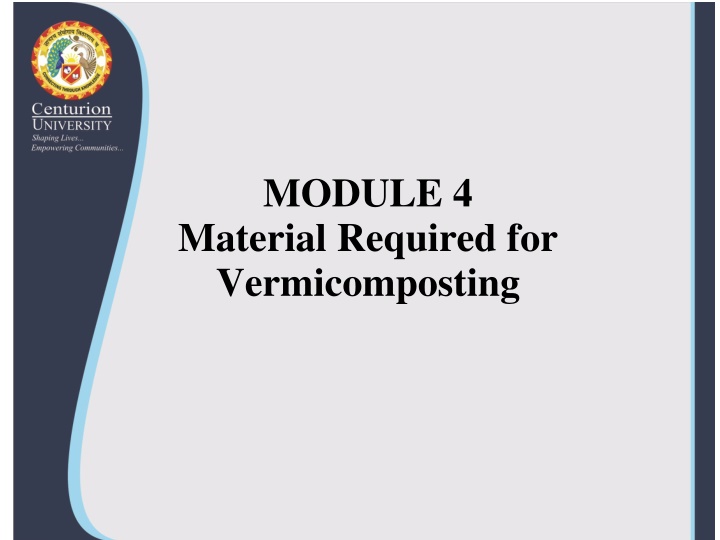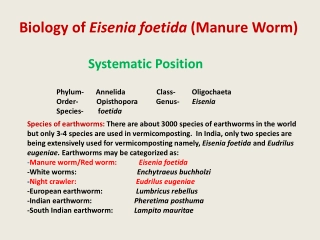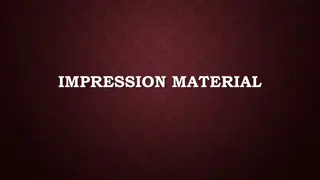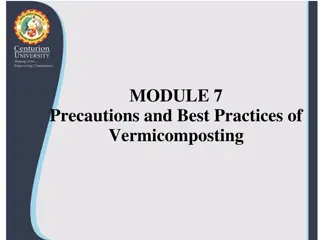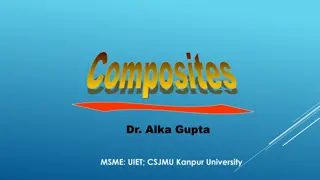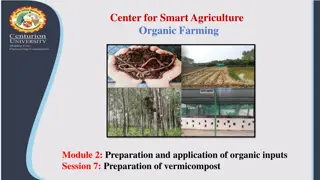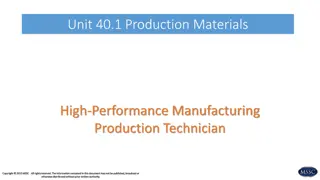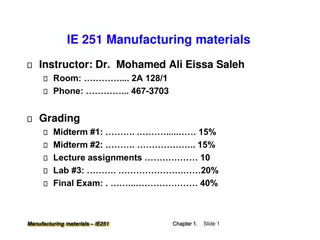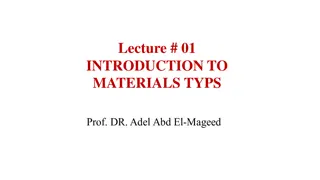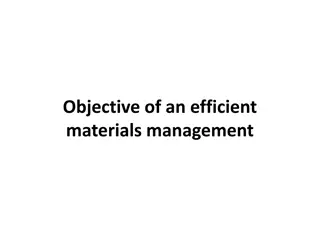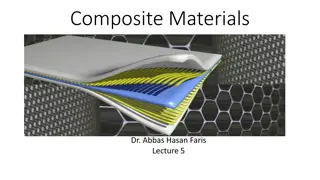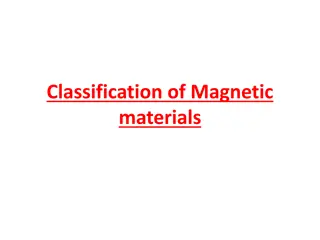Essential Materials for Vermicomposting
Learn about the wide range of agricultural residues and other organic wastes that can be utilized for vermicomposting, including straw, leaves, vegetable scraps, and various types of manures. Discover how these raw materials can be effectively converted into nutrient-rich vermicompost to enhance soil health and plant growth. Gain insights into the process of setting up a vermicompost pit with proper dimensions for optimal composting results.
Download Presentation

Please find below an Image/Link to download the presentation.
The content on the website is provided AS IS for your information and personal use only. It may not be sold, licensed, or shared on other websites without obtaining consent from the author.If you encounter any issues during the download, it is possible that the publisher has removed the file from their server.
You are allowed to download the files provided on this website for personal or commercial use, subject to the condition that they are used lawfully. All files are the property of their respective owners.
The content on the website is provided AS IS for your information and personal use only. It may not be sold, licensed, or shared on other websites without obtaining consent from the author.
E N D
Presentation Transcript
MODULE 4 Material Required for Vermicomposting
Materials Required for Vermicomposting A range of agricultural residues, all dry wastes, for example, sorghum straw and rice straw (after feeding cattle), dry leaves of crops and trees, pigeonpea (Cajanus cajan) stalks. Groundnut (Arachis hypogaea) husk, soybean residues, vegetable wastes, weed (Parthenium) plants before flowering, fiber from coconut (Cocos nucifera) trees and sugarcane (Saccharum officinarum) trash can be converted into vermicompost.
In addition, animal manures, dairy and poultry wastes, food industry wastes, municipal solid wastes, biogas sludge and bagasse from sugarcane factories also serve as good raw materials for vermicomposting.
The quantity of raw materials required using a dimension of vermicompost pit: Tank/pit dimension 3 m x1.2 m x0.8 m (length x breadth x height ) Tank should be inclined, to collect vermiwash. Holes are made in the tank above 40 cm from base for better aeration.
